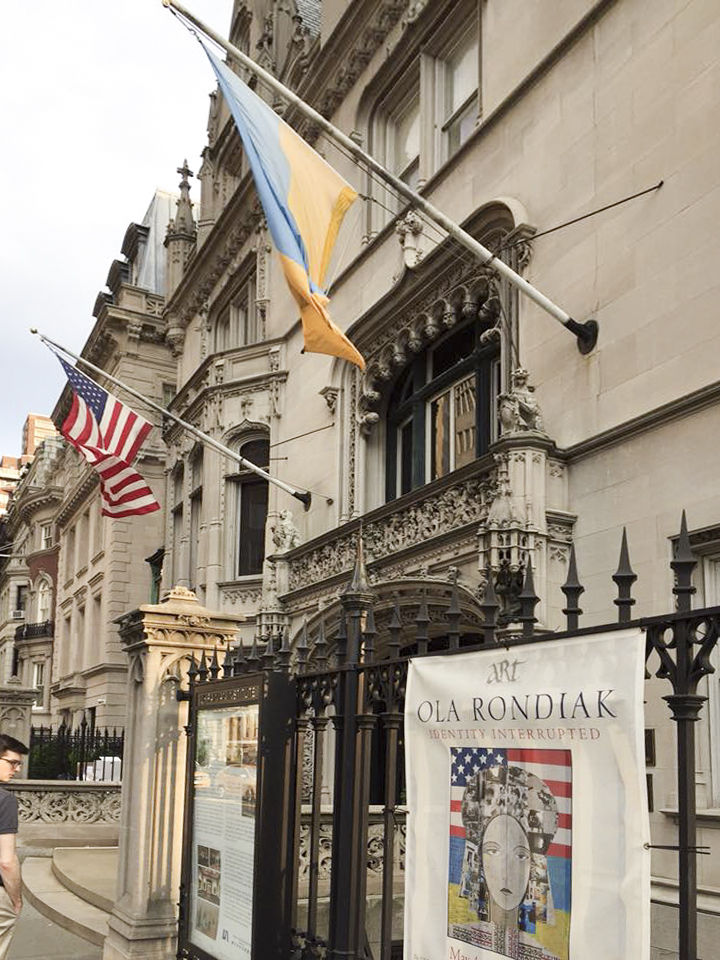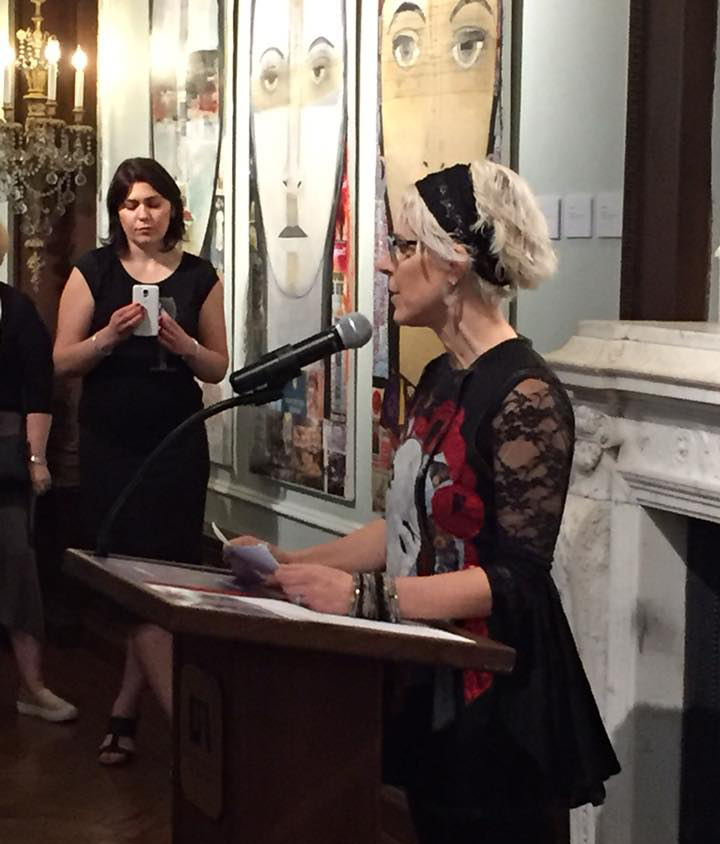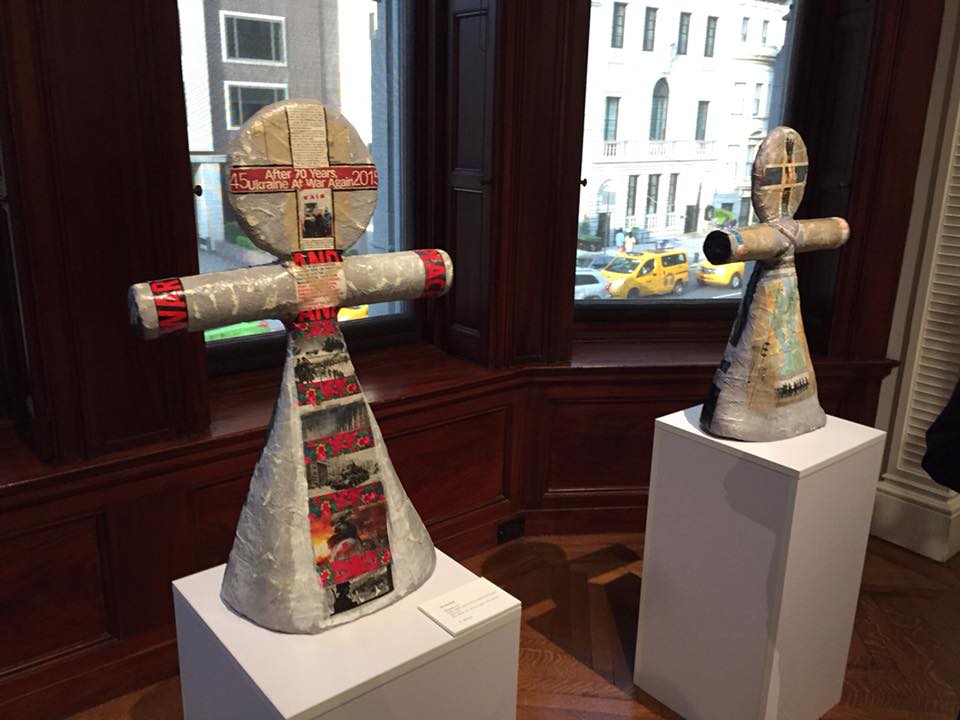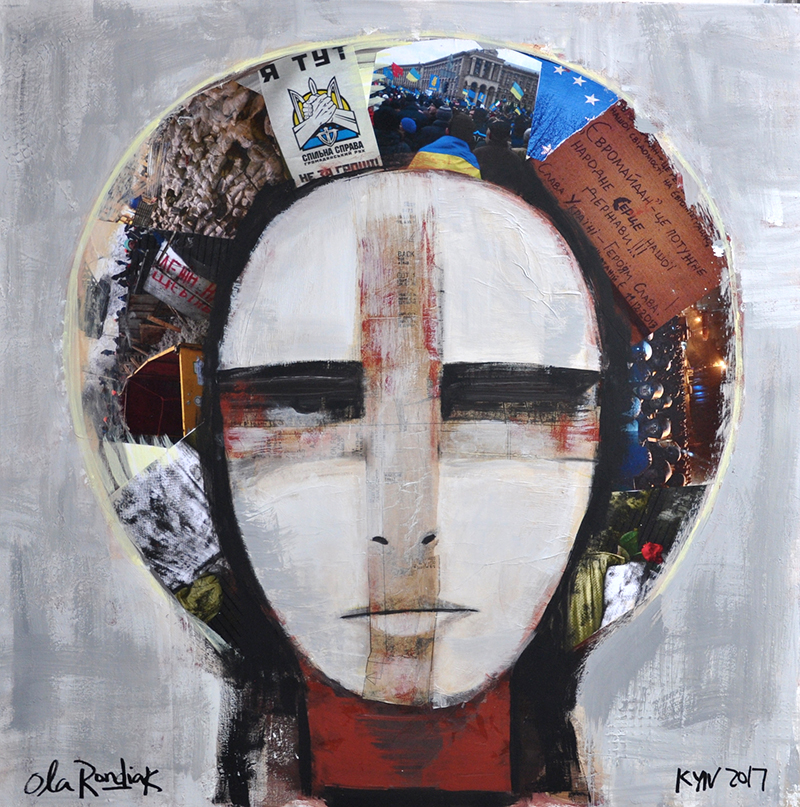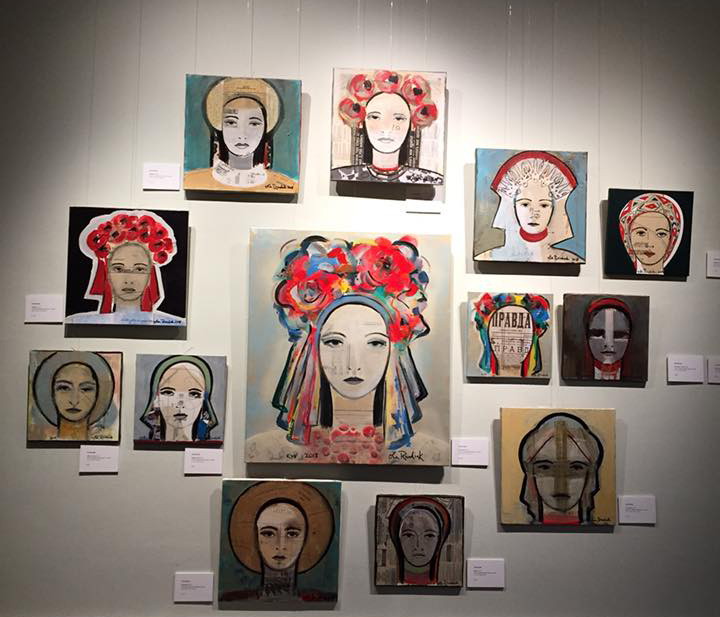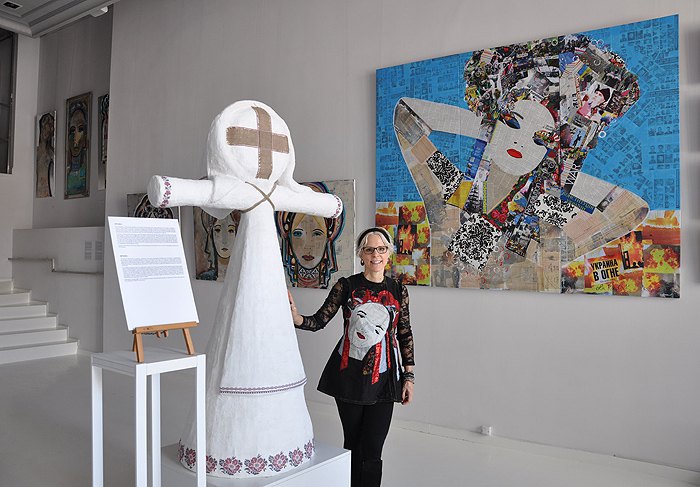Interview with Olya Rondiak
especially for Elegant New York
led by Alexandra Chumak
Ola, the opening of your exhibition took place on May 4 at the Ukrainian Institute of America in New York. What is the exhibit dedicated to?
Yes, my exhibit “Identity, Interrupted” was opened on May 4th at the Ukrainian Institute of America in Manhattan.
In my series Identity, Interrupted, I share how my Ukrainian identity, of growing up in the USA as the daughter of immigrants, was challenged when I began day to day life in a newly independent, 1990’s Ukraine.
Growing up in America, it was very natural for me to tell everyone that I was Ukrainian. My parents felt it deeply important for us to learn the Ukrainian language, history, and culture. The Ukrainian community was strong in all major cities. I attended Ukrainian school on Saturdays, Ukrainian church on Sundays, and Ukrainian scouting camps during summer and winter school breaks. My parents were fulfilling a deeply felt obligation to keep Ukrainian culture alive because, on the other side of the Iron Curtain, the very existence of the Ukrainian National Idea was being threatened. They feared that Ukraine itself could disappear as the language, religion, and culture were being russified in the USSR. Ukraine, as I knew it, became a very strong part of my identity.
In 1991, Ukraine gained its independence and my husband and I moved to Kyiv shortly thereafter in 1995. We wanted to experience our roots first hand. The irony was that when I moved to Ukraine, the identity I wanted so badly to connect with was not there. In the streets of 1990’s Kyiv, Russian was the language of choice and the traditions I grew up with were considered quaint and provincial. I would have to redefine for myself what it meant to be Ukrainian. Redefine my core identity. My identity was interrupted.
In your art, there is an obvious influence of Ukrainian history and specifically the political events of recent years. What is your message and to what audience is it addressed? To a Ukrainian, American, or global audience? What kind of influence on or reaction from are you expecting?
I have been creating contemporary female portraits since 2013. For me, this female image has become a metaphor for Ukraine, as they portray a courageous, free and determined spirit. I have learned that my art is an expression of something much greater than me. Although I always felt connected to my grandmother whom I never met, living in Kyiv and being inspired by Ukraine, allowed me to tap into my spiritual connection with her, and she was able to pass her talent through me in order to continue this thread of unification. I realized not only how strong she was, but how much internal strength lies within the people in Ukraine. I think that the timing of this exhibit is perfect.
Just as I have been redefining my identity, I think that after Maidan, and especially with the war in the east, Ukrainians are experiencing a new way to identify with Ukraine. Even though Ukraine has been technically independent for over 26 years, it takes time to put all the pieces together, for people to reconnect with Ukraine’s history, roots and culture. Ukraine’s identity as a nation was also interrupted.
In addition to my paintings, I created a life-size “Motanka”. The history of this ancient, hand woven, Ukrainian rag doll resonates with me deeply. I created the sculpture as a symbolic protectress of Ukraine from its aggressors, and a unifier to heal Ukrainians from generations of pain. Over the centuries, many people have given their lives for Ukraine’s freedom, including all the thousands in the last few years beginning with the Revolution of Dignity. This is why I have chosen to create the Motanka sculpture out of plaster of paris, which is the material used to create casts to heal broken bones. I feel that Ukrainians have been repeatedly traumatized and perhaps are never given enough time to acknowledge the pain in order to begin healing. The first step to healing is to acknowledge the pain. This allows us to be true to ourselves and our children, which in turn opens the door for Ukraine to reach its full potential of developing into an independent and prosperous country.
What other than Ukraine’s history and a situation in general, inspires your creativity? Possibly some styles or favorite artists (painters, sculptors etc.)?
My art is heavily influenced by my family’s history as well as my own experiences in life. The Ukraine that I was identifying with throughout my childhood was the one that my mother left at 11 years old. She arrived in Ellis Island with my grandfather at 16 years old. And while my mother and grandfather ended up as refugees in Austria at a “displaced people’s” camp, my grandmother was sent to a female labor camp in Mordovia, Russia. While she was there, after losing her family and home, she secretly created beautiful embroideries using fishbones for needles, potato sacks for canvas, and threads from her clothing. She managed to smuggle them out after being released and passing them on to a clandestine priest who was traveling to America. He then smuggled them into the states, where the Chicago Tribune wrote an article about them in 1980, and then they eventually found their home with my family.
My grandmother, her strength, and tenacity, has become a great source of inspiration. The fact that she lost everything, was forced to do physical labor in a prison, and still had the strength to create embroideries, is my source of hope and renewal.
It hasn’t always been easy raising three children in Ukraine, while my mother and siblings were in America, but it has been an honor to watch Ukraine develop as a democracy and unfold its wings to freedom. This is what my grandparents and parents fought for and dreamed about. And although Ukraine is now fighting a war with Russia in the east and dealing with the left-over corruption, it is well on its way to realizing itself as a true democracy. I have witnessed this transition with my own eyes.
How does your American side manifest itself in your art? What comes through your creativity from your experiences of living in America? To which culture do you feel yourself closer to?
As I grew up in America, I was well aware of the sacrifices that were made for us to be there. Life was quite difficult for my grandfather as he lost one of his daughters, had to leave behind his wife and home, including a well-established reputation as a professor. He arrived in America without any money, not knowing the language and a 16-year-old daughter to feed. He worked wherever he could, including jobs as a dishwasher in a restaurant and in a greenhouse. Even though he lost the prestige he had in Ukraine, he said he would rather do any job in America than live without freedom. My grandfather taught me that we all have control over our own minds. Even while being physically tortured, he said that we have the power to have our own thoughts, and no one can take that away from us. He taught me how valuable freedom is, but how it comes at a great cost.
Over the last 23 years living mostly in Ukraine, I have connected closely with many Ukrainians. They have taught me that being Ukrainian is more than just speaking the language and staying true to traditions. It’s a deeper feeling of belonging to and caring for a nation that you call home. I have learned that by following my heart and moving here I was able to form a more mature identity, which includes my American and Ukrainian roots. Living here and seeing how people still aren’t allowed to travel as freely as I am, has also helped me respect the freedom of America that we often take for granted. While working as an artist, as well as a psychotherapist, I realized that I have a responsibility to continue this battle for freedom of our minds, bodies, and souls.
You have a psychology education. What place does psychology have in your artistic worldview? How does it influence your art?
As a psychotherapist, my job was to help people get to the truth beneath the surface. To explore a deeper understanding of oneself in order to reveal the hidden feelings within. As an artist, I continue to seek the subconscious, the inner feelings of the faces I paint. I paint them until their personality surfaces and through the combination of collage, assemblage, and painting I am able to connect with my inner reality and allow these images to emerge.
I believe there is a very natural connection between art and psychology. For example, is any of my art ever complete without a viewer interpreting what he or she sees? And how do they interpret it? Their brains process the art in their own way, having had their individual experiences in life and bringing their own meaning to what they see. I also see creativity as being essential in both art and psychotherapy in order to find the true meaning within. So, I believe that art and psychology are closely related.
“…Rondiak captures her own vision to broaden our grasp of human experience and resiliency to finding the freedom to live in a society that remembers it’s past, “ writes Kathrine Page, Gretchen Hupfel Curator of Contemporary Art at The Delaware Contemporary. “ In this respect, by commemorating the past, Rondiak’s creativity cuts the cloth of a new absolute beauty with a redemptive quality that clearly understands the important healing role of art and the psyche for future generations.”
How has your viewpoint (or vision), as an artist, changed over the years, as well as the role of art in your life and your role in art?
I believe that my vision as an artist continues to mature as I create. What started out as an unknown experiment and a way to help me express what I didn’t understand it myself, has become broader and more balanced. I am learning to incorporate my intellect as well as the skills I have been learning along the way. Allowing myself to accept and embrace my role as an artist, as opposed to questioning it, opens a world of creative thoughts and ideas to emerge.
Art is clearly inseparable from my life. I am thrilled to have found my purpose and meaning in this role. I don’t think that it is an accident or a coincidence that the older my children get, the clearer and stronger my role in art emerge. I also know that my art is much greater than I am. It is a connector and I now respect that I need to be patient. I learned that I must continue to have faith in the process of creating. I trust that as long as I provide the time, discipline and work ethic into my creativity, my art will continue to grow.

